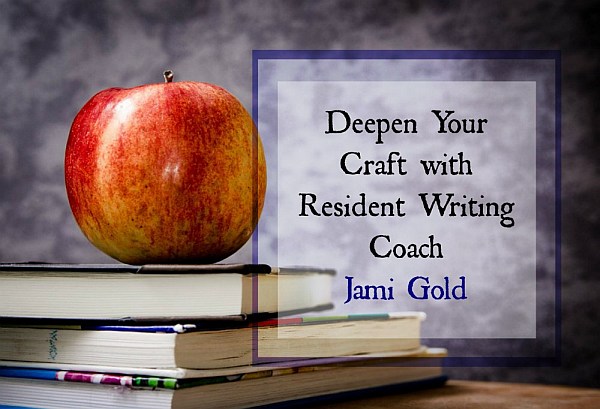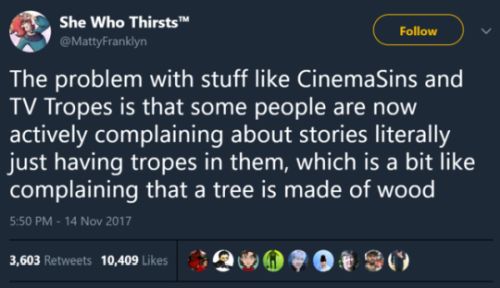How to Make the Most of Our Story’s Tropes

It’s time for another one of my guest posts over at Angela Ackerman and Becca Puglisi’s Writers Helping Writers site. As one of their Resident Writing Coaches, I’ve previously shared:
- insights on how to approach an overwhelming revision
- how to increase the stakes (the consequences for failure) in our story
- 7 ways to indicate time passage in our stories (and 2 issues to watch out for)
- how to translate story beats to any genre
- how and why we should avoid episodic writing
- how to find and fix unintended themes
- how “plot” holes can sneak into our characters and worldbuilding
- how TV shows can help us learn to hook our readers
- what we can learn from stories that successfully break the rules
- how to ensure revisions aren’t creating rips in our story
- how to create strong story goals that won’t slow our pacing
- how to keep readers supportive through our characters’ changes
- how to use bridging conflict to kick off our story’s momentum
- how to create the right pace for our story (and make it strong)
- how to make the “right” first impression for our character
- what options we have if our story doesn’t fit the usual approach to conflict
With this turn for another coaching article at WHW, I’m exploring the use (and misuse) of story tropes in our writing. Most advice tells us to avoid the use of tropes, but is that really the best idea — or even possible? Let’s take a look…
Can We Avoid Tropes?
Tropes—common themes or story devices—are often derided by people for being cliché or predictable. Many see them as lazy storytelling. I don’t disagree. Tropes can be all of those things.
But just because they can be misused doesn’t mean that it’s impossible to use them well. I figure it’s best to learn how to use them properly because trying to avoid all tropes is probably downright impossible.
I was reminded of this fact when frequent commenter here Sieran Lane tagged me in a Facebook post that compared stories containing tropes to the way trees contain wood. *grin*

Every Option Is a Trope
The use of tropes in our stories is like a cookie recipe, where there are limited options for some of the ingredients. If we don’t want to make a recipe that includes eggs, then we still need to include something to bind the other ingredients together. In the same way, our stories will include certain types of elements, just because that’s necessary for our story genre or premise.
For example, if our story includes a big life-and-death showdown against the villains, do our heroes manage to defeat the bad guys without any of them dying? That’s one trope. Or does one of our heroes sacrifice themselves to help vanquish the bad guys? That’s another trope.
As Sieran mentioned on Facebook: “Friends who become lovers is a trope. Enemies who become lovers is a trope. People with mixed feelings towards each other who become lovers is also a trope.” As one of the building blocks of storytelling, tropes usually can’t be avoided.
4 Ways to Surprise Readers with Tropes
Instead of pointlessly trying to avoid tropes, it’s better to learn how to use them well. Great, what does that mean?
Our first thought might be to make a trope fresh and less predictable by giving it a surprising twist. That’s a good instinct—but how do we do that?
Trope Twist #1: Go Deeper
We can explore what the implications or consequences of a trope really mean. Treat the trope as realistically and/or non-superficially as possible.
For example, the movie Frozen exposed the idea of “love at first sight,” playing with the audience’s expectations of how fairy tales often include the trope. Then it added the twist of showing—somewhat realistically—how Anna didn’t know who Hans really was because they’d just met.
Trope Twist #2: Defy Stereotypes
Think about the stereotypes of a trope—and then defy those expectations. A trope can include the usual set up but include unusual ingredients.
Every story includes tropes, but here are 4 ways to give them a unique twist… Click To TweetFor example, some romances include a bad-boy/good-girl trope. We could instead do a gender flip, or make our intimidating, leather-wearing hero a good boy.
(Confession: While typing this example, I realized I’ve used this technique in my stories, like how Ironclad Devotion gender flips with a tattooed, motorcycle-riding “bad girl” heroine and a good-ol’-cowboy hero. *grin*)
Trope Twist #3: Include Misleading Hints
We can use readers’ knowledge and expectations of a trope against them. If we include a trope and follow the formula all the way through, readers won’t be prepared for a last-minute twist, such as a reveal that shows how things aren’t what they seemed.
For example, we could set up a trope of a character being special, like a “chosen one.” With enough hints toward that trope, readers will expect us to fully reveal the character’s important role at the end of the story. Instead, we could reveal that something else was going on all along and those hints were actually leading to a different conclusion.
Trope Twist #4: Add a Measure of Self-Awareness
Sometimes we can get away with clichés by calling more attention to them. “Hanging a lampshade” on an element gives a wink-wink-nudge-nudge to readers and tells them: We know what this looks like, but trust us, it’s there for a reason.
For example, a contemporary romance story that includes an “arranged marriage” trope might be hard for readers to accept…unless the characters make the same sort of observations as readers would, such as pointing out how it’s like something out of a historical romance novel. In other words, the characters can be somewhat familiar with the trope and comment on the situation in that light.
Writers Helping Writers: Resident Writing Coach Program
Story Tropes: To Avoid or Not to Avoid?
Rather than beating our heads against our keyboards with the impossible goal of trying to avoid tropes, let’s instead take a broader view. Come join me at WHW above, where I’m sharing:
- why the usual advice says to avoid tropes
- the risks of misusing tropes
- some of the signs of misusing tropes
- why using tropes well can actually help our story
- additional ways we can improve our use of tropes
Have you seen advice to avoid tropes? Do you agree or disagree with my point about not being able to avoid them? Can you think of other ways to twist a trope? (My WHW posts are limited in word count, but I’m happy to go deeper here if anyone wants more info. *smile*)
Pin It
Haha yay I’m glad you liked that meme too! I liked your analogy of trying to bake cookies without eggs (is that even possible???? I don’t know much about baking, but.) Wow, on your trope example of the underdog misfits learning the value of teamwork, and beating an impossibly tough team, that is precisely the trope in the series I’m hopelessly obsessed with—Nora Sakavic’s All For the Game trilogy. There are now 7887 fanfics on Archive of Our Own for this trilogy!! So I’m not alone in loving this story to death, haha. The main cast of All For The Game play a fictional sport called Exy, which is like a more violent version of Lacrosse. The books show in detail how the Foxes (the underdog misfit team) manage to beat the Ravens (the top dog team). The author showed how they were extra motivated to work hard, due to some personal reasons; you could see how the protagonist and a teammate who used to be a national champion before an injury, practiced hard together every night. Moreover, the protagonist’s love interest is one of the best goalkeepers out there, but he always lacked motivation until later in the story, and not just because he fell in love with the protagonist, either. The Foxes managed to beat many tough teams even before the Ravens, and you see specific strategies they used to beat the teams, so their victories weren’t random. Their first game against the Ravens was a loss, too.… — Read More »